

What a difference the GtG Project is making
The Greening the Grey (GtG) Project has pump primed a number of innovative initiatives highlighted within this update with more in development. The £300K of levy provided by the Southern RFCC for the last 3 financial years has levered in over £250K of match funding for this phase and over £1m for delivery. The development enabled by the GTG project has allowed us to be much more ambitious in delivery so we can make a real difference at scale. Although the additional implementation funding is large it is the development of the project that is not currently funded, and this is the real value of the GTG project.
Coastal Partners hope that the Southern Regional Flood and Coastal Committee can continue to fund this important initiative in line with the original business case for the next 2 financial years. This will that ensure the unique and valuable project is not curtailed just as it has gained momentum and is really making a demonstrable difference on the ground.

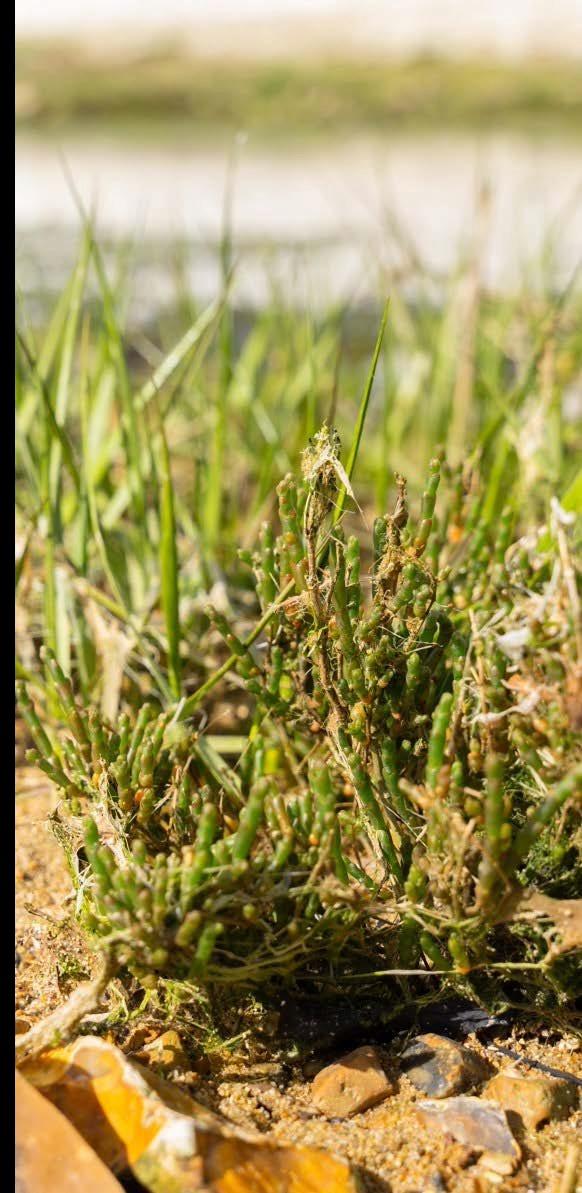

Ports Creek and Hilsea Lines update

The North Portsea Coastal Scheme is now progressing into construction, this is where the Greening the Grey can really make a different implementing environmental improvements in a costeffective way whilst the project is in construction. As part of this phase we will be implementing a suite of environmelntal improvements which woud not have been possible without funding from the Greening the Grey Project, enabling the development of the design and also attracting in other funds for implementation.
The suite of measures include:
• Saltmarsh creation on the revetment
• Seagrass feasibility trial within the Creek
• Water quality and biodiversity improvements within Hilsea Moats
*Including marginal edge improvements, reedbed creation, development of a sustainable drainage system and eel passage improvements
• Other enhancements include smaller interventions such as the installation of Kingfisher nesting tunnels.
It has taken a couple of years to get permissions, develop and refine the designs. Now we are approximately halfway through the GtG project, we are seeing action on the ground at Ports Creek and Hilsea Lines.
However to get to this stage, we have had to undertaken many surveys and investigations to develop the proposals to ensure that the all licenses and consents are in place, and the match funding has been secured. The following site investigations and studies have taken place to develop a suite of environmental improvement measures that can now be implemented on site.

Sediment & Contamination Testing of the Moat
These tests were undertaken to determine if and how we can reuse the sediment on site as well as to calibrate the hydrological model in the creek.

This hydrological model has been developed to mimic the hydrological regime within the creek after the FCERM works are completed. This can then infer future environmental parameters which has been used to inform and refine the saltmarsh and seagrass creation trials


Drop Down Video Survey
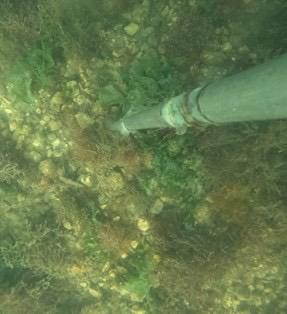


A drop-down video survey was carried out in the creek’s subtidal habitat, along with the hydrological model detailed above, these are informing the seagrass feasibility trial.
Google Map

Sonar & Digital Terrain Model

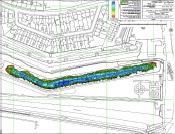
A sonar survey was carried out to determine the depth of sediment within the moats to help determine the cost of moving the sediment and also to inform and refine possible in-moat ecological improvements. A digital terrain model was also required to undertake a flood risk assessment to ensure that the proposed works will not increase the flood risk. This information will provide insight to Historic England as to how the moats were constructed and feed into future interpretation panels on site.
Implementation Phase
All the surveys and investigations have been required to develop the concepts, test feasibility and refine the design for the suite of ecological improvement measures, these measure are summarised below.
Marginal habitat and improvements of water quality in the Moats
The project will utilise the sediment along the bank to create marginal habitat improvements for biodiversity, this will be done through localised desilting of the moat. The detailed design of this is currently being finalised. The improved biodiverse edge will create not only a valuable and attractive wildlife habitat but also it will help to define the Scheduled Ancient Monument.

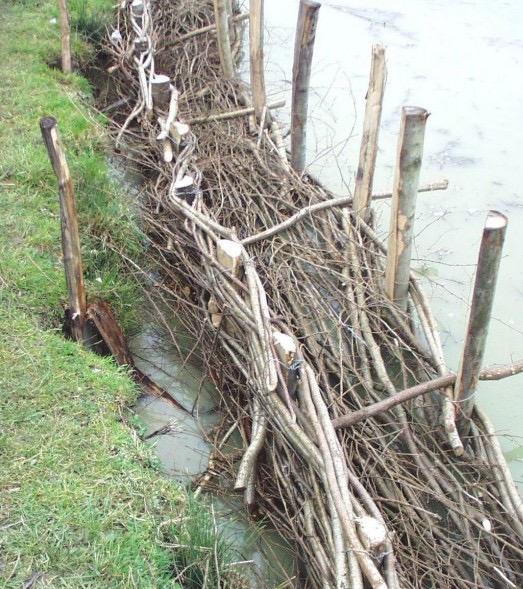


Sustainable Urban Drainage Systems (SUDs) to improve water quality
These investigations included historical investigations and surveying existing networks, to inform the SUDs design. We have some initial designs but these are being refined to increase and improve the water quality within the moat system. The water quality is vital for the eels that migrate into the moats from the creek.
Eel Passage Improvements

European eels have experienced a 90% decline across the UK over the

Eels have suffered dramatic declines over a number of years and are now listed as ‘Critically Endangered’ on the global IUCN Red List of Threatened Species. One sub-project is to alter a culvert which is known to trap eels and will therefore help eel passage between the moats and the creek. This then links to the other aspects of improving the biodiversity and water quality within the moats.


Kingfisher Improvements
Kingfishers are known to use the area around Ports Creek and Hilsea Lines. One has recently been spotted using our marker posts. We will shortly be installing kingfisher nesting tunnels and perches into a new wall on site to create nesting habitat for them.



Providing Better Habitats for Wildlife

Updates from Other Areas
The Local Levy helped fund the benthic survey that is required to develop this major habitat restoration scheme, linked to the Langstone village FCERM scheme.
There are still a lot of hurdles to overcome before this becomes a formal project but this survey is a critical step in progressing this exciting scheme.

Coastal Partners are in discussions with regulators to get an in-principle decision to progress with the marine licence. Future work will also include working with local stakeholders and marinas to retain sediment within the system to recreate saltmarsh. One aspect will be to develop a citizen science project as a core theme.

Southsea Success
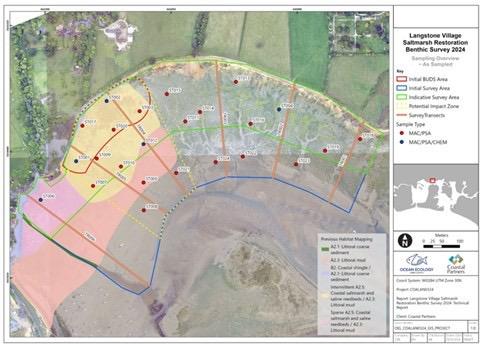

Southsea Tidepools Monitoring success of the GtG interventions

Work is underway to lay foreshore material over the new rock revetment. The aim of this is to promote saltmarsh growth and to provide habitat for wildlife. Later in the project Coastal Partners will be planting saltmarsh plants on the revetment as a trial to encourage further colonisation. The long term aim is to allow saltmarsh plants to adapt to sea-level rise and provide a valuable seed bank for the local area. This project will be monitored and will also provide valuable information for other habitat creation projects elsewhere in the region.
During the summer of 2024, an independent survey was carried out by an expert in the field, Dr A Hall to monitor how the GtG interventions are progressing at Southsea which were installed using SRFCC levy as well as other match funding sources during construction of part of the Southsea FCERM scheme.
The report concluded that the combination of enhancement techniques has resulted in a diverse community, we highly recommend these techniques for use on future schemes. The provision of water retaining features and increased surface heterogeneity in both the concrete and granite rockpools have allowed a diverse range of rockpool species to colonise the revetment.


Langstone Village Habitat Restoration in Chichester Harbour
Inside the tidal Pools
Below are some of the species observed within the Tidal Pools:






Species observed in the Granite Artificial Rockpools:





a) purse spongeSycon ciliatum
b) prawnPalaemon sp
c) peacock wormSabella pavonina
d) chitonLepidochitona cinerea
e) perwinklesLittorina saxatalis
f) corkwing wrasseSymphodus melops

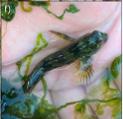

a) wood pigeonColumba palumbus
b) green algaeBryopsis plumosa
c) sea spiderPycnogonid sp
d) top shellSteromphala umblilicalis
e) green shore crabCarcinus maenas
f) shannyeLipophrys pholis
Our Thanks
Thank you to the SRFCC for their continued support that has allowed Coastal Partners to develop ground breaking projects such as these.
The GtG initiative is now nearly half way through a five year programme and we hope you agree that the project is now in full flow. Large scale implementation will be taking place over the next year along with development of future initiatives for future FCERM schemes.
For more information, please contact Lucy.sheffield@havant.gov.uk







